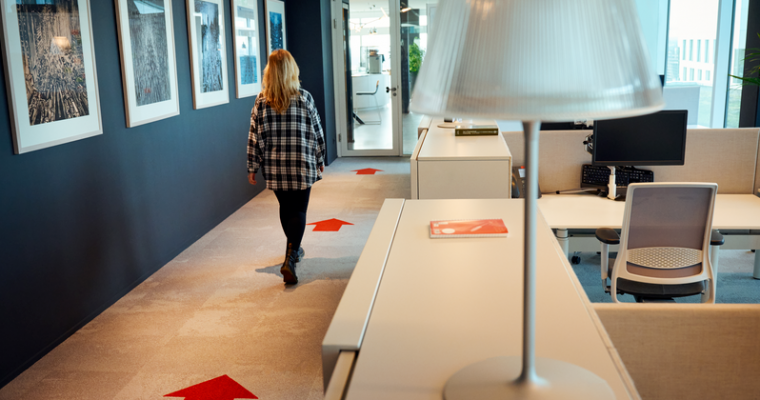
The workforce of the future… now?
For your employeesIn March 2021, Australians were feeling pretty good, largely COVID-free and returning to normal. By July, more than 20 percent of Australia’s workforce was back in lockdown. Things can turn on a dime in the current climate. As if anyone needed reminding, the Coronavirus pandemic will continue to change how and where we work.
Many organisations managed to implement remote or flexible work environments at the drop of a hat in February and March 2020. While this was a remarkable adjustment, it wasn’t entirely unpredicted; it just came a little sooner and faster than expected. What we’re experiencing is the workforce of the future… now.
In terms of creating flexible workforces and implementing change quickly, what are some of the long-term trends at play that are revealing themselves?
A 2018 report released by Global Consulting giant PwC titled, Workforce of the Future: the Competing Forces Shaping 2030 is a decade-long study looking at how workplaces might be organised by the year 2030. While the likelihood of future lockdowns in Australia as a strategy of controlling Coronavirus outbreaks remains high, the report provides important insights into the kinds of strategies and processes that HR leaders should be considering now — or at least making sure their organisation can implement (or switch to) immediately.
The five megatrends at play
As Global Leader, People and Organisation at PwC, Carol Stubbings notes, “We are living through a fundamental transformation in the way we work. Automation and ‘thinking machines’ are replacing human tasks and jobs, and changing the skills that organisations are looking for in their people.”
The report talks about five ‘megatrends’ shaping the future of work:
- Technological breakthroughs — robotics, artificial intelligence and machine learning are some of the biggest forces, perhaps the most powerful, shaping the future of work;
- Demographic shifts — changes in the size, the age profile and where the bulk of the global population is located;
- Rapid urbanisation — the United Nations predicts, by the year 2030, 4.9 billion people will live in major cities and, by 2050, “The world’s urban population will have increased by some 72 [percent]. In this new world, cities will become important agents for job creation”;
- Shifts in global economic power — a shift in the balance of power between developed and developing nations;
- Resource scarcity and climate change — “depleted fossil fuels, extreme weather, rising sea levels and water shortages will result in new types of jobs in alternative energy, new engineering processes, product design and waste management and re‑use will need to be created… traditional energy industries, and the millions of people employed by them, will see a rapid restructuring.”
How do we rise to the challenges?
For Australian and New Zealand businesses — and employees in equal measure — adaptability will be essential for navigating and rising to the changes ahead.
Technology and automation are poised to replace many of the tasks that are now performed by people. One third of employees worldwide are now worried about losing their job to automation, according to a survey of over 10,000 people interviewed as part of PwC’s report. But on the plus side, many sectors, roles and, perhaps, even entire new segments of the workforce will be created.
“Those workers performing tasks which automation can’t yet crack, become more pivotal – and this means creativity, innovation, imagination, and design skills will be prioritised by employers,” write the authors of the report.
“It’s impossible to predict exactly the skills that will be needed even five years from now,” they add, “so workers and organisations need to be ready to adapt… Inevitably, much of the responsibility will be on the individual. They will need not only to adapt to organisational change, but be willing to acquire new skills and experiences throughout their lifetime, to try new tasks and even to rethink and retrain mid‑career.”
In conclusion
Covid-19 has accelerated many of the things that people have been pondering in boardrooms for a long time. To shift the entire workforce into a work-from-home scenario in a four-week window is something that would have been deemed impossible by many HR Directors, CFOs and CEOs. Nevertheless, in March last year, we all did it, proving the future of work can be thrust upon us in an instant.
Many organisations can prepare for the workforce of the future by creating or fostering a workplace culture that encourages staff to embrace training (or retraining) and “adaptability, and the critical and increasingly valued skills of leadership, creativity and innovation.” (p.31)
Importantly, as Carol Stubbings at PwC adds, “No exploration of the future of work will ever be conclusive. Indeed, one of the defining characteristics of our age is its ability to surprise and confound, [but] your starting point matters as much as your destination; the best response may mean radical change, or perhaps just a few steps from where you are today.”
“Your resulting strategy will inevitably mean a combination of obvious, ‘no regrets’ actions and the occasional, educated leap of faith.”
Speak to LeasePlan about rising to the new mobility challenges of a future workforce.
 Driving Insights
Driving Insights





